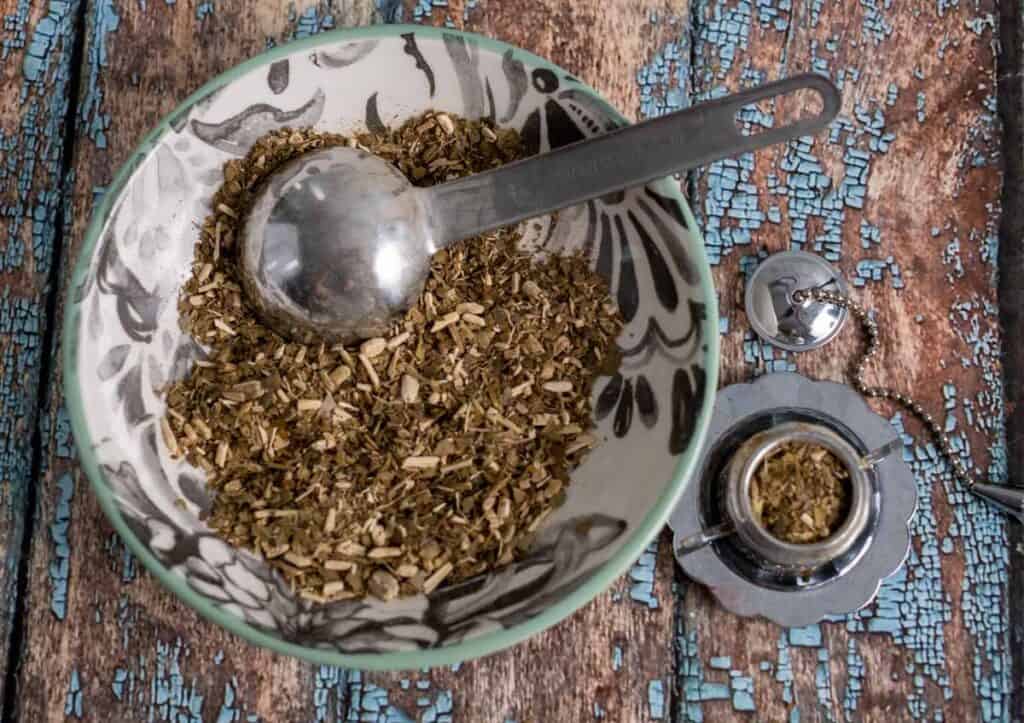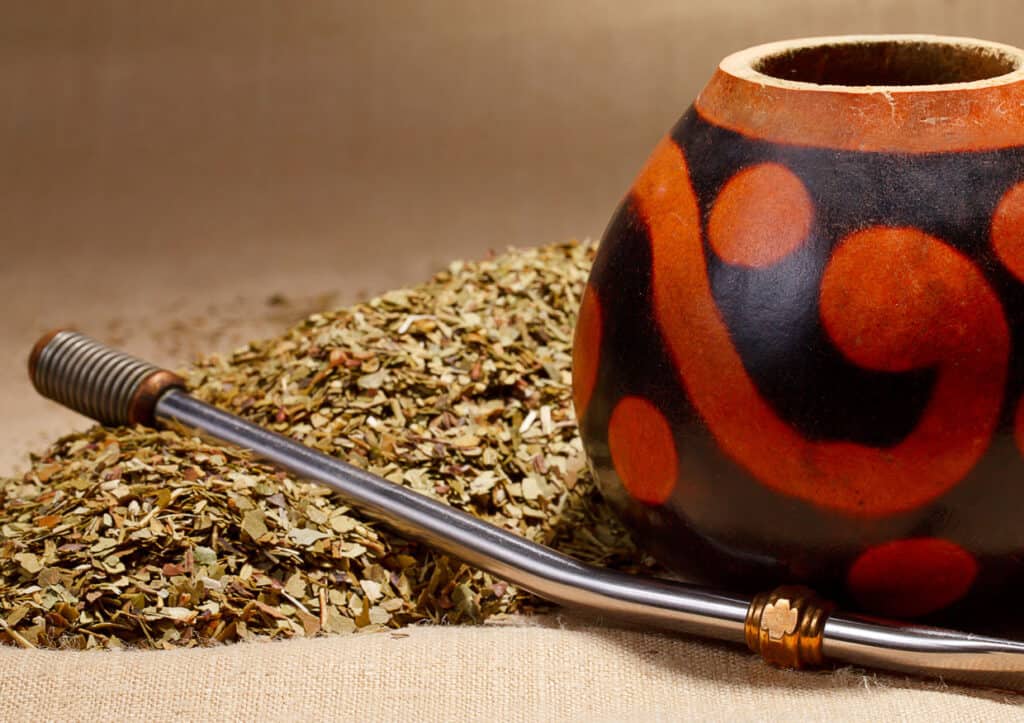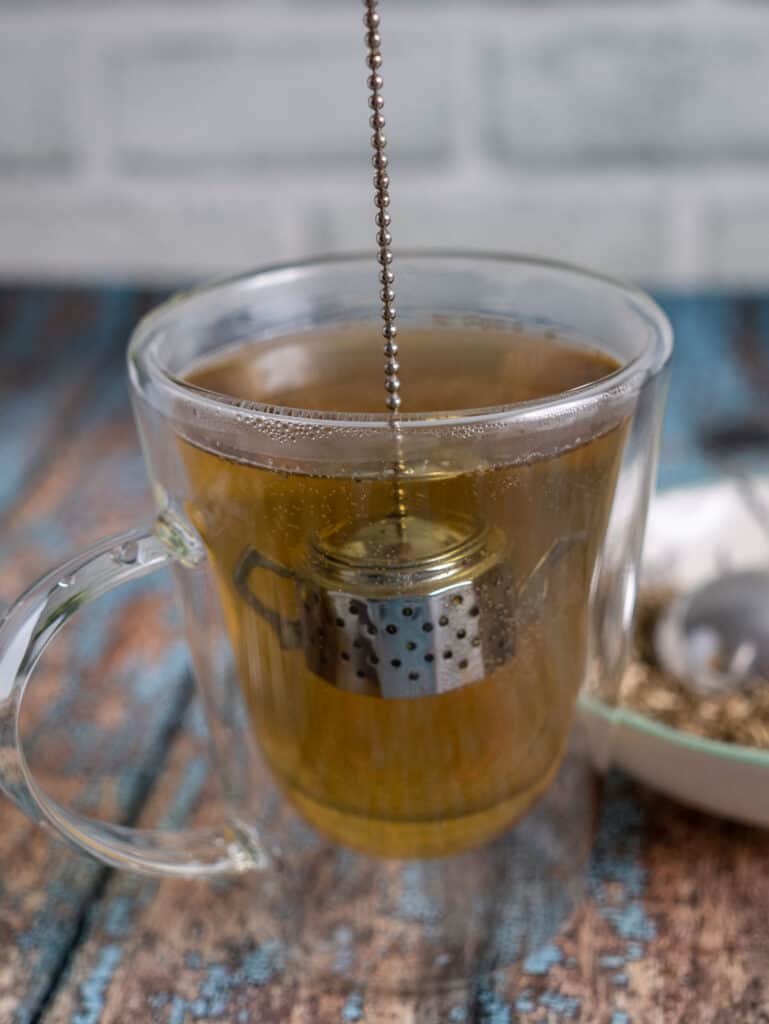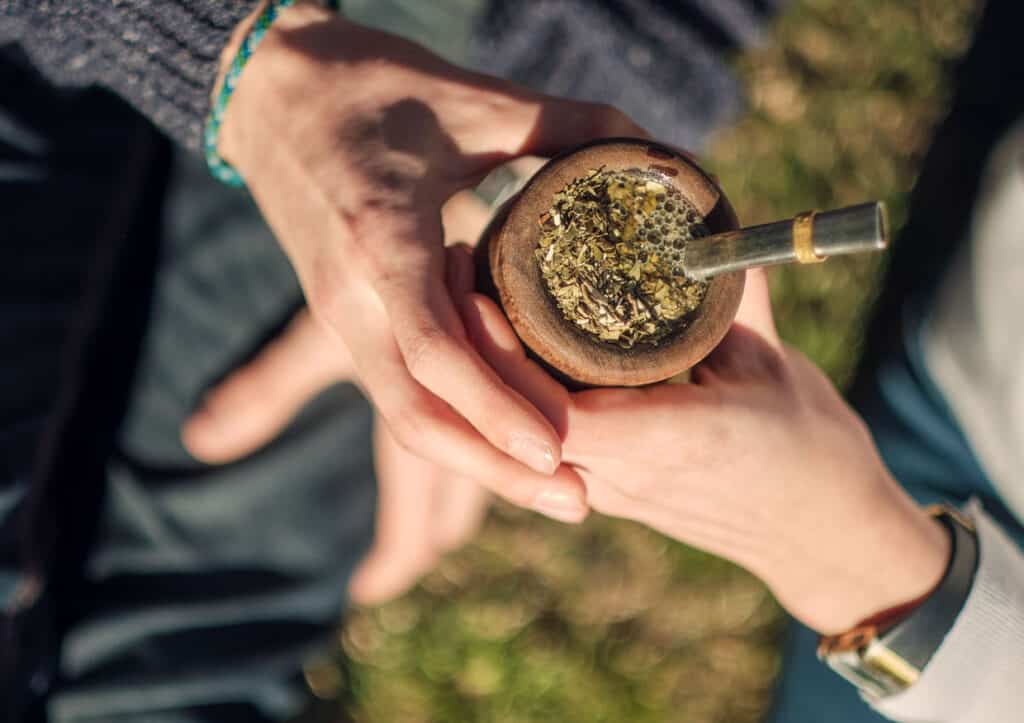Are you ready to learn about the super tea enjoyed for generations in South America? Discover the amazing health benefits and the one-of-a-kind taste of yerba mate.

What is Yerba Mate?
Yerba mate is an herbal tea with the energizing punch of coffee. It’s a South American beverage made from the leaves and twigs of an indigenous plant and has been giving locals a natural pick-me-up for centuries.
Once a relatively unknown drink outside of South America, yerba mate has rocketed to fame, thanks partly to its numerous health benefits. Today, you can find this delicious and nutritious drink in cafes and stores worldwide.
What are the Health Benefits of Yerba Mate?
1. Weight Loss
Research suggests that yerba mate may help weight loss. It does this in two ways.
- It suppresses your hunger by making you feel more full.
- It raises your metabolic rate, so you burn more fat, especially belly fat.
While much more research needs to be done, the initial studies are promising. This health benefit has generated the most excitement and buzz.
2. Energy Boost
Yerba mate contains caffeine, which increases energy levels and improves focus and mental alertness.
A single cup of this herbal tea has around 80 milligrams of caffeine — about the same amount as a cup of coffee. So, yerba mate could be the answer if you’re looking for a coffee alternative.
3. Rich in Antioxidants, Vitamins, and Minerals
Yerba Mate is an excellent source of antioxidants, vitamins, and minerals. Antioxidants can help protect against heart disease and may even improve cholesterol levels.
Yerba mate is also a powerhouse of essential vitamins and minerals. A single cup can provide your body with vitamin C, vitamins B1 and B2, potassium, iron, and calcium.
What Does Yerba Mate Taste Like?
The flavor can vary depending on its preparation. But it is frequently described as robust, bitter, and earthy. Like coffee, getting used to the taste can take some time.

How To Prepare Yerba Mate Tea
Traditional Preparation Method
To make yerba mate the traditional way, you will need the following:
- Loose yerba mate leaves.
- A gourd called a “mate.” Traditionally made from a hollowed-out gourd, you can now buy metal, glass, silicone, or ceramic gourds.
- A metal straw called a “bombilla.” Made of stainless steel, these have a filter, which strains out the leaves as you drink.
The preparation process has many steps.
- Place the dried yerba mate leaves in a gourd. Fill the gourd about half full of yerba mate.
- Pour lukewarm water into the gourd until half full. Then wait about one minute for it to be absorbed.
- Heat water to just below boiling temperature. Pour it into the gourd to fill.
- Put the bombilla into the gourd and press it down to the bottom.
- Sip the tea through the straw, adding more hot water until the leaves lose their flavor.
Tea Infuser Method
If you want a preparation method similar to traditional tea, you can add loose tea leaves to any tea infuser or teapot. You can also buy tea bags with yerba mate or make it into iced tea.
To make it with a tea infuser:
- Heat the water until hot but not boiling.
- Fill the tea infuser with yerba. Rinse it with a couple of tablespoons of cold water to dampen it and reduce any bitterness.
- Put the infuser in a cup or teapot and pour in hot water.
- Let the tea steep for about five minutes.
- Remove the infuser and enjoy your hot beverage.


Should I Sweeten the Tea?
Yerba mate is traditionally served without any sweetener. But you can do whatever you prefer. Some honey, lemon slices, or mint go well with the beverage. Or combine it with some milk and make it into boba tea.
Where Does Yerba Mate Come From?
It originated in South America, specifically in the region of Paraguay, where it was consumed by indigenous tribes over 500 years ago. Once the Spanish colonized the area, they began drinking it, and its popularity soon spread throughout the continent.
Culture of Yerba Mate
Yerba mate is an integral part of the culture of South America, particularly in Argentina, Uruguay, and Paraguay. In these countries, yerba mate is more than just a drink, it is a symbol steeped in tradition and history.
Ruben Arribas, from Gamintraveler.com, has traveled extensively in South America. He explains, “You usually see it consumed everywhere in Argentina and Uruguay.” He says they drink it, “any time of the day, before or after meals, or even as a quick snack.”
In Argentina, yerba mate is passed around among friends and family. This makes it a social activity that brings people together and promotes bonding.
It is also considered a symbol of hospitality and generosity. Offering someone the drink welcomes them into your home and shows them that you value and respect them.
Ruben says, “In Paraguay, they have another version of the tea, known as “terere,” and the main difference is that terere is consumed cold. You’ll see street vendors preparing cold terere with ice available and the usual mate gourd and bombilla.”
In addition, yerba mate is also an essential part of the economy in South America. Growing, harvesting, and producing it provides jobs for many people in the area.
Overall, yerba mate is deeply ingrained in South American culture, and its significance goes far beyond its taste and health benefits.

How Does Yerba Mate Compare to Matcha?
Choosing between yerba mate and matcha can be a tough decision. These two teas have similar properties, and both have some science-backed health benefits.
However, matcha and yerba mate have very different flavors. Matcha has a smooth, mellow taste, while yerba mate has a bold, bitter flavor that may not be for everyone.
Ultimately, the choice comes down to personal preference and what you want in a tea. If you’re after a tea that is rich in flavor and can help you lose weight, yerba mate might be the way to go.
Wrapping Up
From its origins among the indigenous people of South America to widespread consumption today, yerba mate remains a strong tradition throughout much of South America, and this tradition is spreading all over the globe.
Anne Jolly is the creator of the food blog Upstate Ramblings. She loves to cook with gadgets like an air fryer, sous vide or pressure cooker. In her free time she enjoys hiking, reading, knitting and spending time with her three kids.